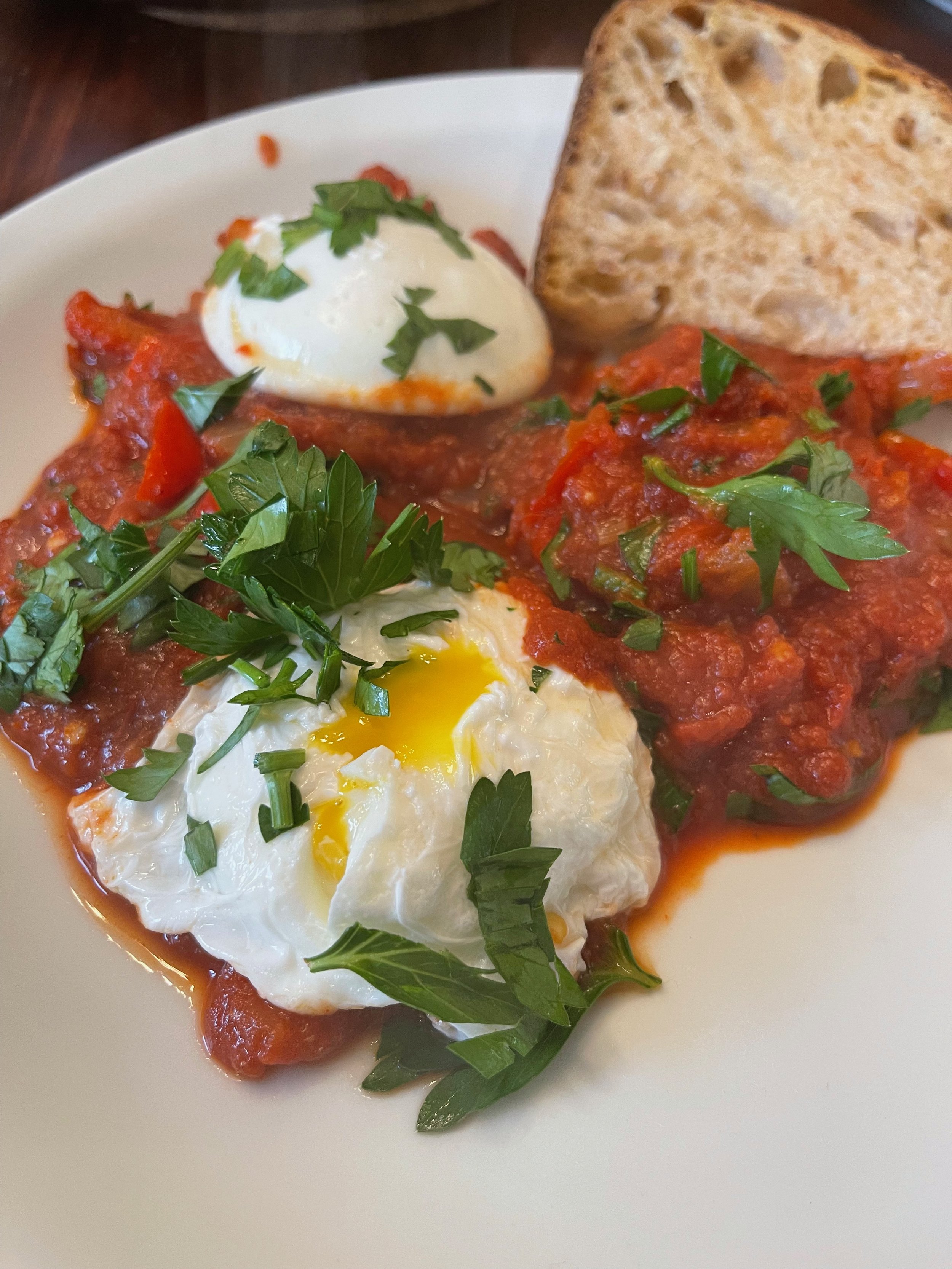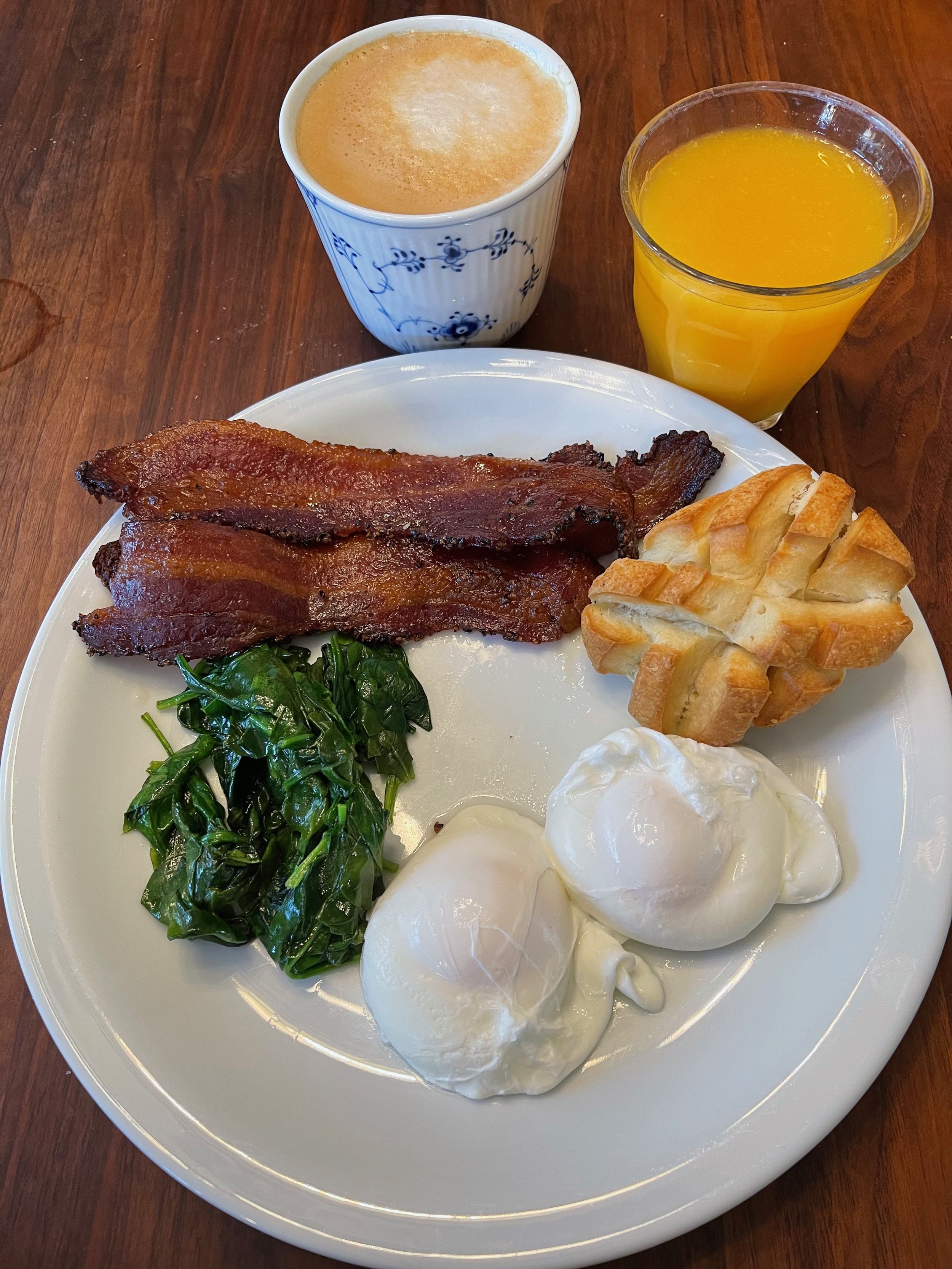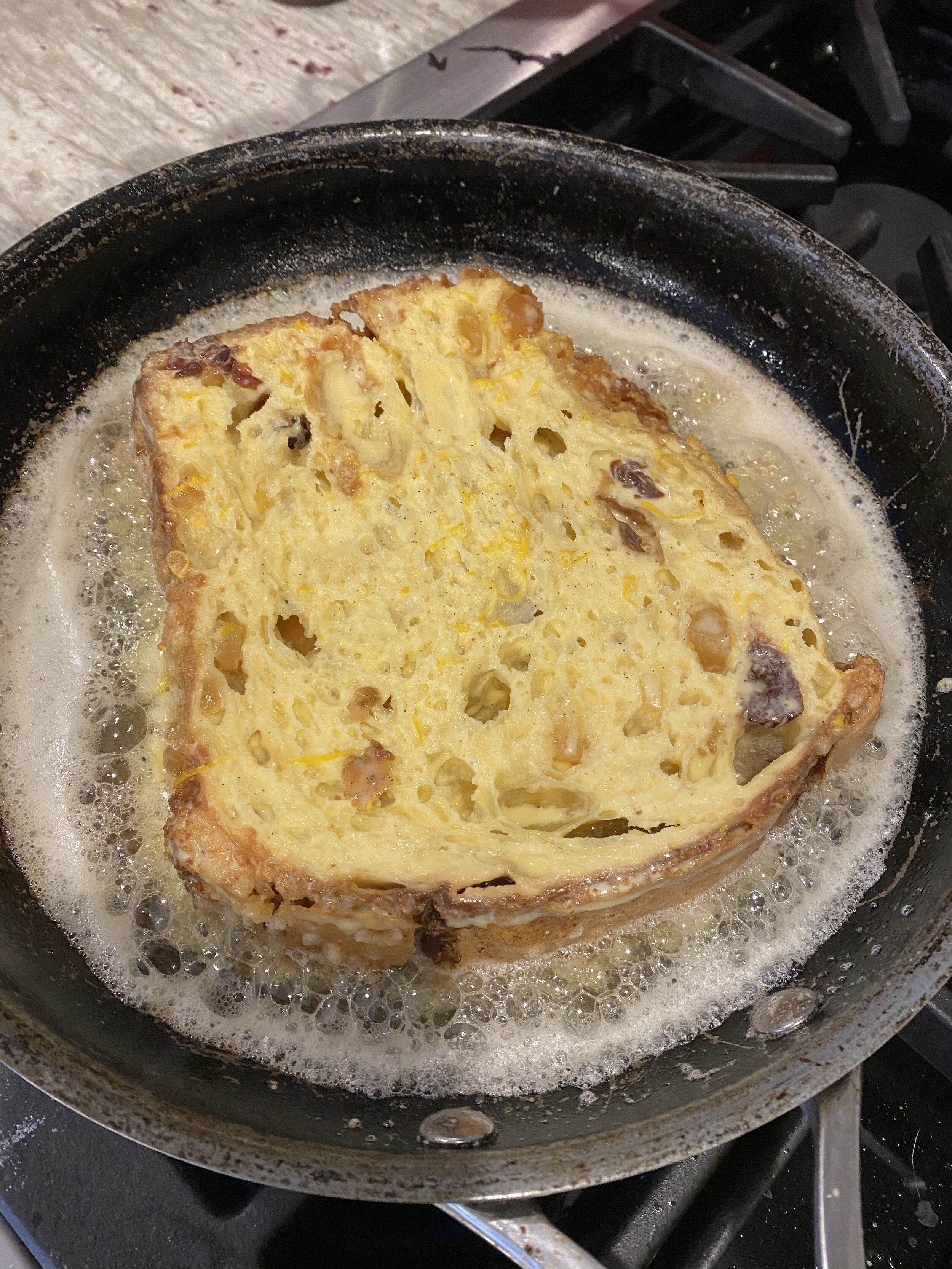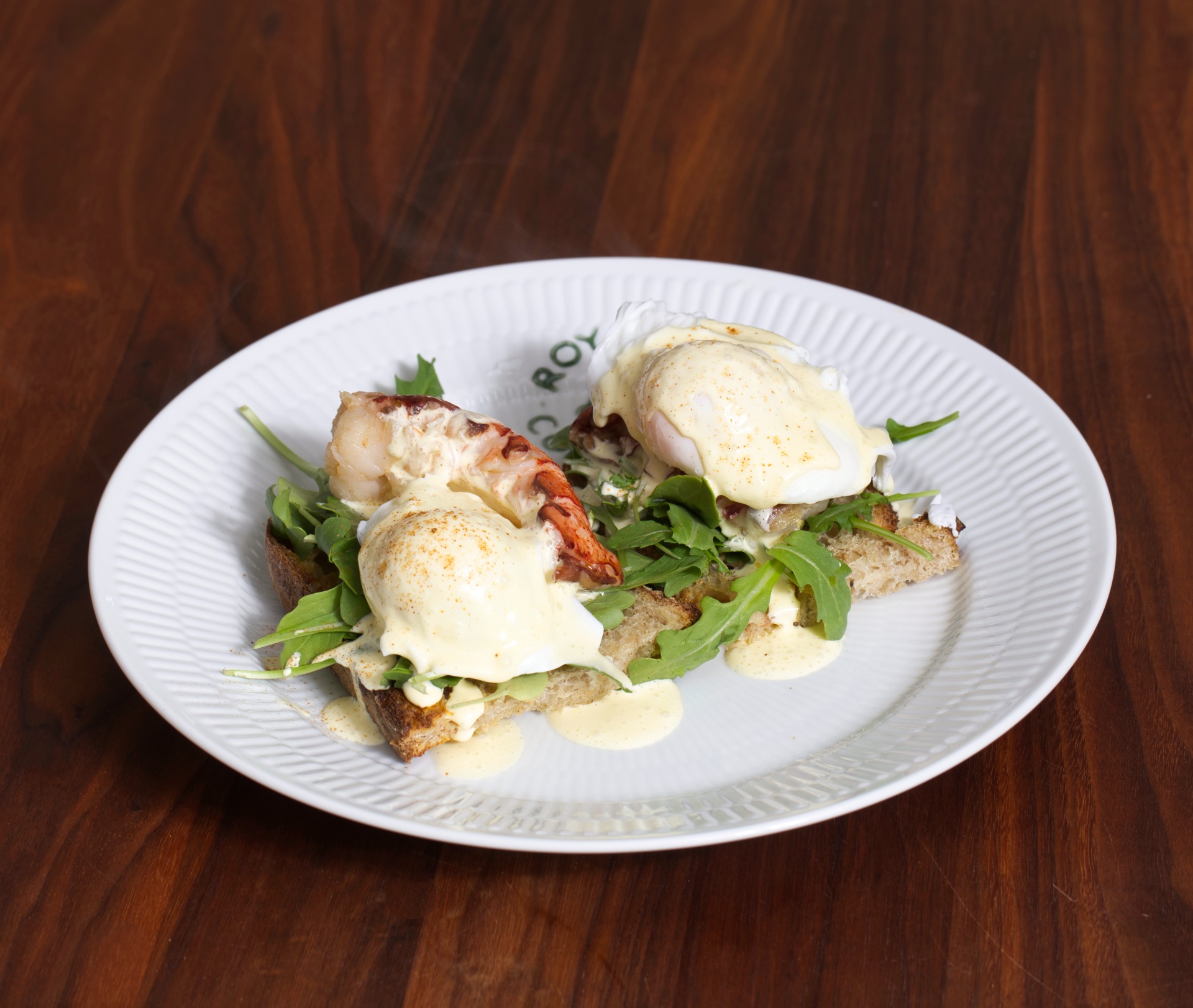Shakshuka a la the Danes
Shakshuka is a spicy sauce of tomatoes and other vegetables with poached eggs originating from North Africa, Tunisia. I first had it at a humus place, and remember it as kinda bland. But I liked the idea of the dish, and my version of the dish is not even close to bland. After serving this to my husband, it went into his top of breakfast dishes. I poach the eggs separately, so I can make a large pot of the sauce, even adding whatever vegetables I have on hand, and freeze it in smaller portions. By doing this Shakshuka becomes a quick breakfast, just heating the sauce, and poaching the eggs.
Serves 2-3.
Ingredients:
1 onion, diced
1 red bell pepper, diced
2 garlic clove, minced
1 can diced tomatoes
1½ teaspoon cumin
¼ teaspoon cayenne pepper or red chili flakes
1 teaspoon paprika (½ mild and ½ smoked)
salt, to taste
Topping
chili, diced
parsley, chopped
Directions:
In a deep frying pan, heat the oil and cook the onion and bell pepper for around 5 minutes, until the onion is translucent. Stir in the spices and garlic and cook for a couple more minutes. Add the tomatoes and season with salt and pepper to taste. Let the sauce simmer gently for 15 minutes, letting the sauce thicken a bit.
(For the traditional shakshuka make up 4 hollows in the sauce, and crack an egg in each one, cover the pan with a lid and cook for another 5-8 minutes until the desired doneness of the eggs.)
I make poached eggs and serve them on top, because I think it’s easier to control.
Now, with a large spoon, make four hollows at the points of the compass in the mixture.
Just before serving place the poached eggs on top, and sprinkle with chopped chili and parsley.
Serve the dish immediately with a slice of good bread, preferably toasted.
Enjoy!






